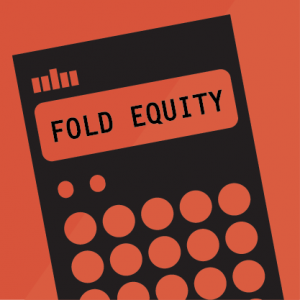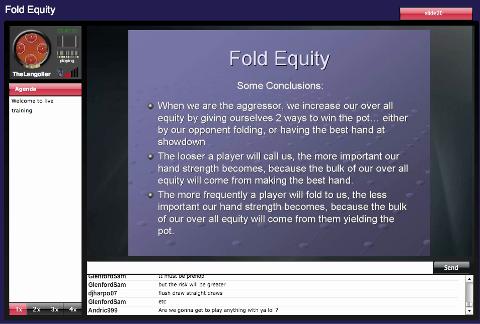Introduction to Fold Equity

Some of you out there have heard the term fold equity thrown around in various poker shows, in strategy videos online, or maybe even by advanced poker players. Today, we are going to introduce you to the concept of fold equity, and in a way that doesn’t force you to have to make a ton of mathematical calculations.
What is Fold Equity?
Fold equity simply stated is the equity that you gain in a hand when you think you will be able to force your opponent to fold to your bet. When you bet in a pot, you give yourself an additional chance to win the pot as your opponent may fold the pot. This gives you added equity in the hand, hence fold equity.
Most of the time that you hear the term fold equity used in a hand, it will refer to heads-up situations on the flop or afterward.
How to Best Gauge Your Fold Equity Without Math
While many will go over the mathematical computations of fold equity, odds are that you will not need to really know the down and dirty numbers of fold equity unless you are moving up in stakes or you’re playing against a ton of decent players.
The basics of fold equity are that if you think that your opponent will likely fold to your bet, then you have a ton of fold equity. If they are not as likely to fold, your fold equity is very little. If you think they will call you down, then your fold equity is 0.
Other Factors to Consider
There are other factors to consider when gauging your fold equity against a player. Their stack size relative to yours in poker tournaments will help you determine their likelihood of folding to your bet.
If you both see a relatively dry board and your stack is a significant portion of his stack, the chances for him folding to your bet increase, thus increasing your fold equity.
There are times during a tournament where your fold equity will be higher than normal. For example, when you’re approaching the bubble, your fold equity will be higher against all but the largest stacks. Many players will not want to tangle with you and risk bubbling the tournament.

Also, when there is a significant pay jump, your fold equity is higher. For example, the top three spots at the WSOP Main Event pay the most, so when you get four-handed, your fold equity is going to be higher in certain spots.
An opponent’s style of play will also help you gauge fold equity. A somewhat tight player, even with a healthy stack, is a great player to bet into as they are going to probably get out of most pots unless they have some type of hand.
Adversely, your fold equity will be lower against looser players and almost zero against calling stations. Knowing an opponent’s playing style will help you quickly gauge whether you have fold equity or not.
Keep in mind that fold equity is a concept that is more applicable to tournaments than in cash games. In cash games, players are going to call down bets a bit more frequently because they can simply reload if they are wrong and get stacked. Depending on your opponent, there may be times where you can take advantage of fold equity, but it will not be nearly as frequent as in tournament situations.
The above is a simple, non-mathematical way of explaining the fold equity concept. If you think that your opponent may fold to a bet, then bet. This is how you gain fold equity. If you don’t think they will fold, don’t bet as you have no fold equity. The concept is really that simple.
